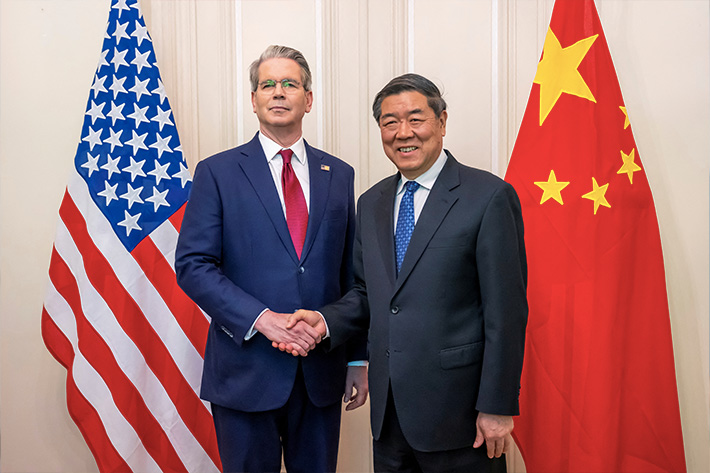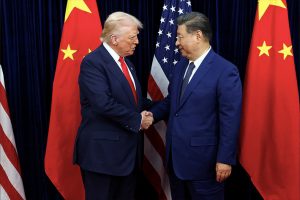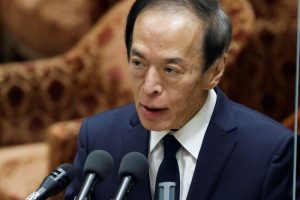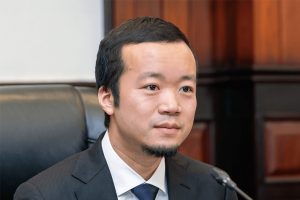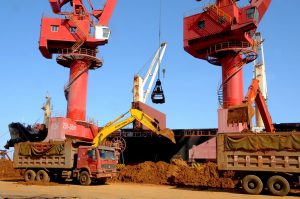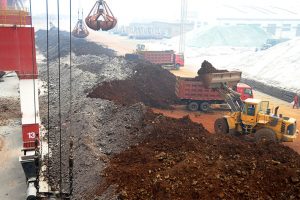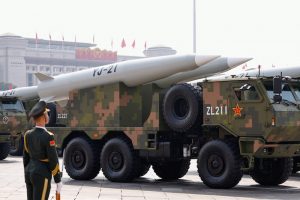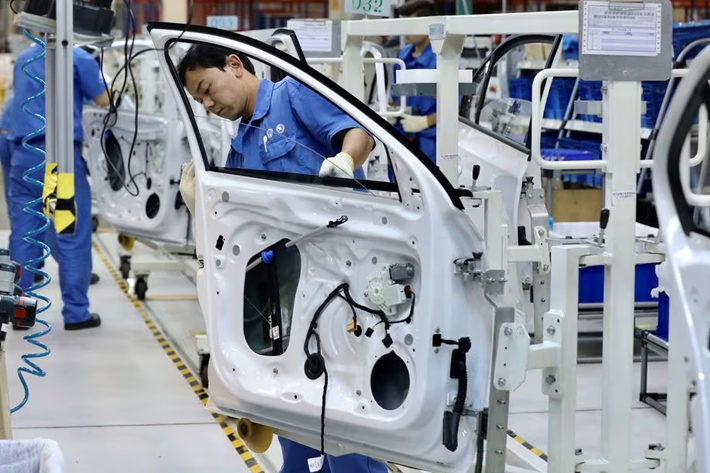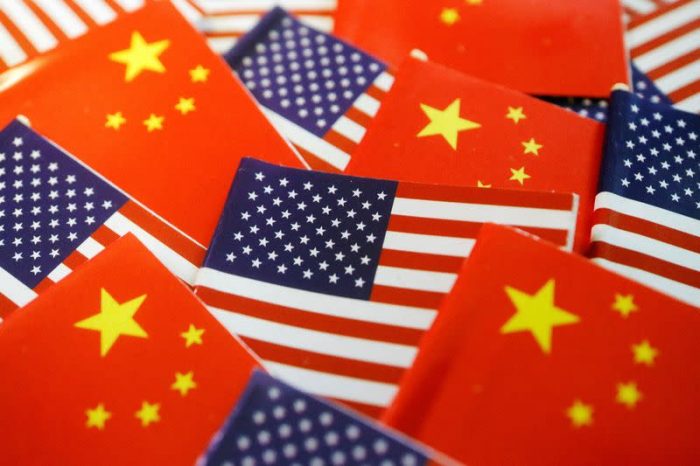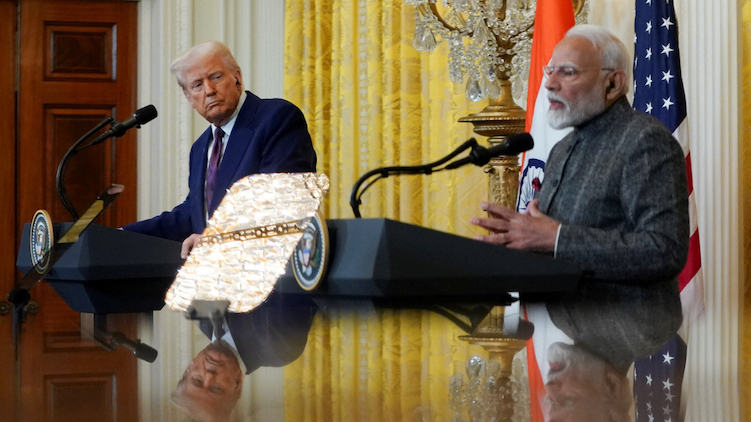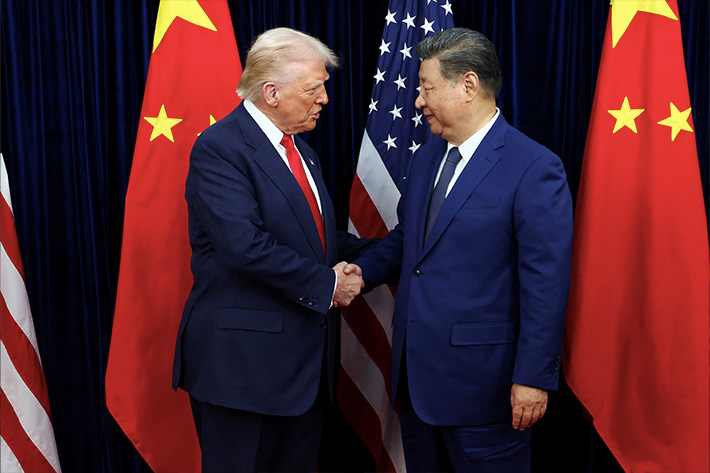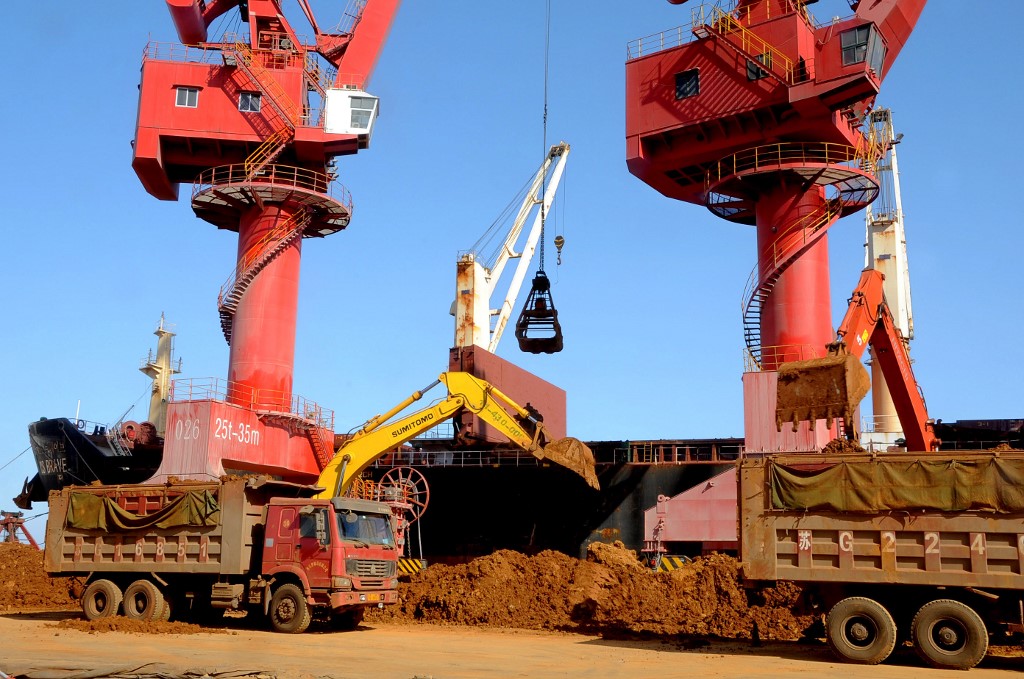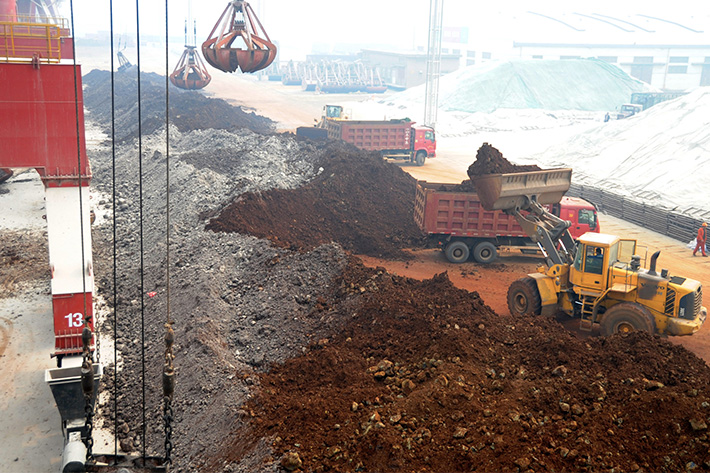US-China trade tensions appear to have eased following news that financial leaders from the two superpowers will meet this week.
Stocks in Hong Kong and Shanghai rebounded on Monday after a heavy selloff last week, amid signs that US President Donald Trump will back off from his tariff threats.
Trump is also said to have revealed his three priorities for a trade deal with Beijing, saying on Sunday that rare earths, soybeans and fentanyl were the US’s top priorities for a deal with Beijing.
ALSO SEE: US Reports 4.8% 3rd Quarter Growth Prior to Talks With US
Hong Kong’s benchmark Hang Seng Index rose by 2.4% – its biggest rise in two months, with tech shares tied to AI, chips and robots leading the way, while China’s blue-chip CSI3000 index and the Shanghai Composite Index both climbed by about 0.6%.
US Treasury Secretary Scott Bessent said on Friday he expects to meet with Chinese Vice Premier He Lifeng, possibly in Malaysia this week, to try to forestall an escalation of US tariffs on Chinese goods that Trump conceded was unsustainable.
Chinese and Hong Kong stocks posted their biggest weekly drop since April after Trump threatened 100% tariffs on Chinese exports, signalling his anger at Beijing tightening its rare earth export controls.
But the US leader appears to have cooled since then. And investors appear to believe he will back down if his key goals are attained.
Investors on Monday may have also been distracted by China starting talks at a four-day Plenum meeting that started today (Oct 20) on its next five-year plan, amid speculation that President Xi Jinping will seek to retain office for a fourth term, although no announcement on such a move is expected in the short term, according to a report by the New York Times.
Official data published on Monday showed China’s economy slowed in the third quarter, to its weakest pace in a year, weighed down by a slump in fixed asset investment and plunging property prices.
Nomura analyst Ting Lu said in a note last week he expects China to crank up its focus on cutting-edge technology, but noted that “Beijing will have to clean up the property sector mess” in its next five years.
That’s because the real estate is still the second-biggest economic sector in China, with about half of household wealth invested in property, and the fact it still accounts for nearly a fifth of local government revenue.
Rare earth exports drop again
Beijing is playing tough on Trump’s main concerns. China bought over $12 billion worth of US soybeans last year, but has reportedly sourced all its soy from South America this year, knowing, of course, that US farmers – key supporters of Trump – are yearning for the trade deal that will ease their pain.
China has reportedly tightened controls on two chemicals used to make fentanyl, but the rare earth export controls imposed earlier this month have become the hot issue again after Washington announced in late September that it had widened its blacklist of Chinese companies to include subsidiaries of firms already on its Entity List.
And with the US imposing substantial fees on Chinese vessels docking at US ports, it’s perhaps little wonder that Beijing has hit back.
Amplifying concern is the fact that China’s exports of rare earth magnets fell by nearly 29% to the US in September, from the previous month, according to the latest data.
That news has reignited fears that the world’s top supplier could wield its dominance over a component key for US defence firms and makers of items from cars to smartphones as leverage in bilateral trade talks.
Beijing squeezed global automakers in April and May with export curbs on a range of rare earth items and related magnets, while negotiators faced off over triple-digit US tariffs on goods from the world’s second-largest economy.
Four months on, worry is growing that China could return to the same playbook. That would mean it reneges on a June deal with the United States to ease the flow of critical minerals.
China’s shipments of rare earth magnets fell 6.1% in September from August, customs data showed on Monday, ending three months of gains, and dropping even before Beijing unveiled a dramatic expansion of its export licensing regime this month.
The September fall to 5,774 tons from a seven-month high of 6,146 tons in August aligns with reports that China is already making it harder for firms to secure licences for exports of rare earth magnets.
‘Stoking panic’
China’s commerce ministry accused the United States last week of stoking global panic over its rare earth controls by deliberately misunderstanding the curbs, and said it would approve export licences intended for civilian use.
But analysts worry China could once again entangle civilian commercial users in curbs aimed at choking US defence firms’ access to critical materials.
“China’s ability to throttle rare earth exports is an exceptionally powerful tool,” Dan Wang, China director at Eurasia Group, said. Apart from disrupting production, such measures would fuel insecurity over access to critical industrial inputs and growing reliance on China, she added.
“The world has to adjust to its management style,” she said, adding that Western countries are not used to complying with a monopolistic control of critical resources from countries on ‘the other side’.
By country, Germany, South Korea, Vietnam, the United States and Mexico were the top five export destinations for Chinese rare earth magnets by volume last month.
Over the nine months of the year, exports of such magnets totalled 39,817 tons, a fall of 7.5% from the corresponding period last year.
Shipments to the United States fell 28.7% in September on the month, the data showed, while exports to Vietnam rose 57.5% over the same period.
Beijing not backing down
Just before the release of the customs data, President Donald Trump told reporters aboard Air Force One that he did not want China to “play the rare earth game with us”.
He suggested he might hold off on raising tariffs back to levels in excess of 100% if the world’s top agricultural buyer committed to purchasing US soybeans.
But Beijing shows no sign of backing down, adamant that its new wider curbs, set to take effect just days before the November 10 expiry of the latest 90-day tariff truce with the United States, are consistent with measures in other major economies.
President Xi Jinping is set to meet Trump in South Korea later this month, but economists warn that trade friction between the two biggest economies may be the new normal.
- Jim Pollard with Reuters
ALSO SEE:
US-China Tensions Rise Amid Disputes on Rare Earths and Trade
China Hits US Ships With Extra Port Fees as Trade Tensions Rise
China Making Exports Of Rare Earth Magnets ‘Increasingly Difficult’
China Starts Collecting Tit-For-Tat Port Fees On US-Owned Ships
Lessons From Japan on Tackling China’s Rare Earth Dominance
China Steps up Checks on Nvidia AI Chips at Major Ports
Trade Deal Signed, But China Still Slow to Release Rare Earths
China Did Not Agree to Military Use of Rare Earths, US Says
US Keen to Control More Ports, Cut China’s ‘Maritime Advantage’
CK Hutchison Rates Ports Deal With Cosco a ‘Reasonable Chance’




